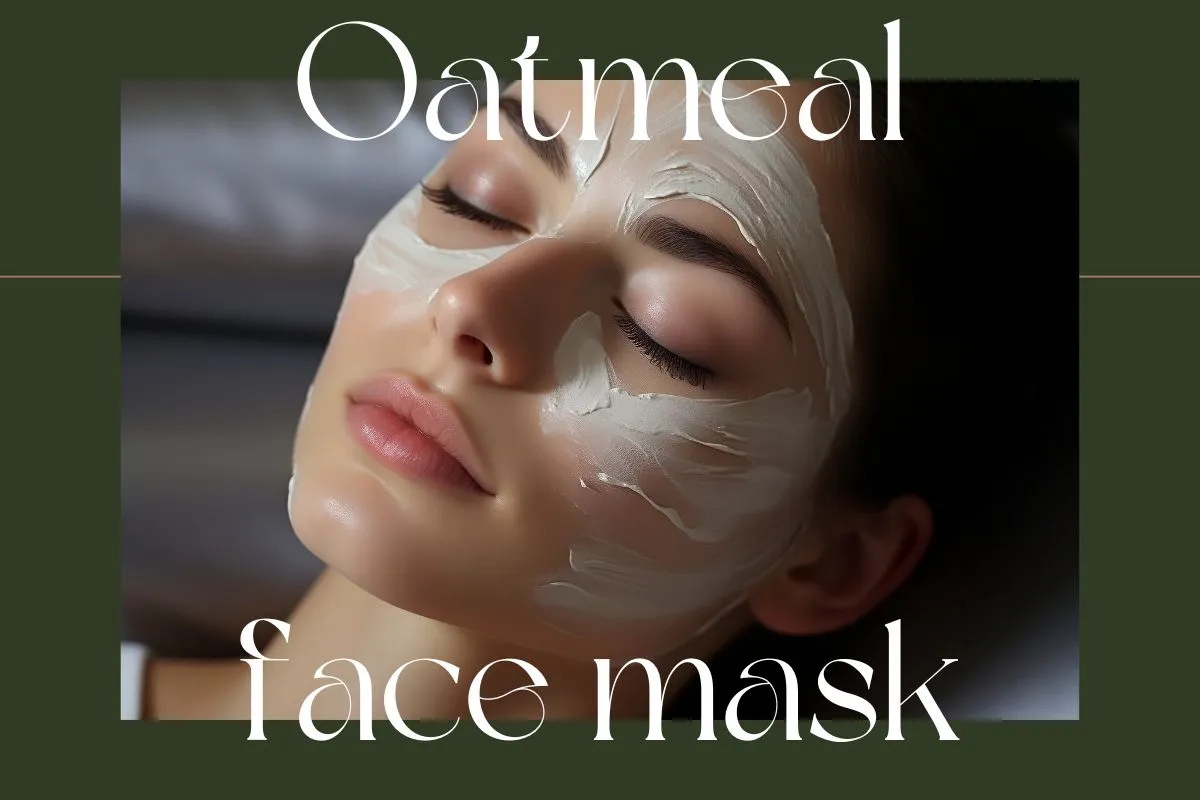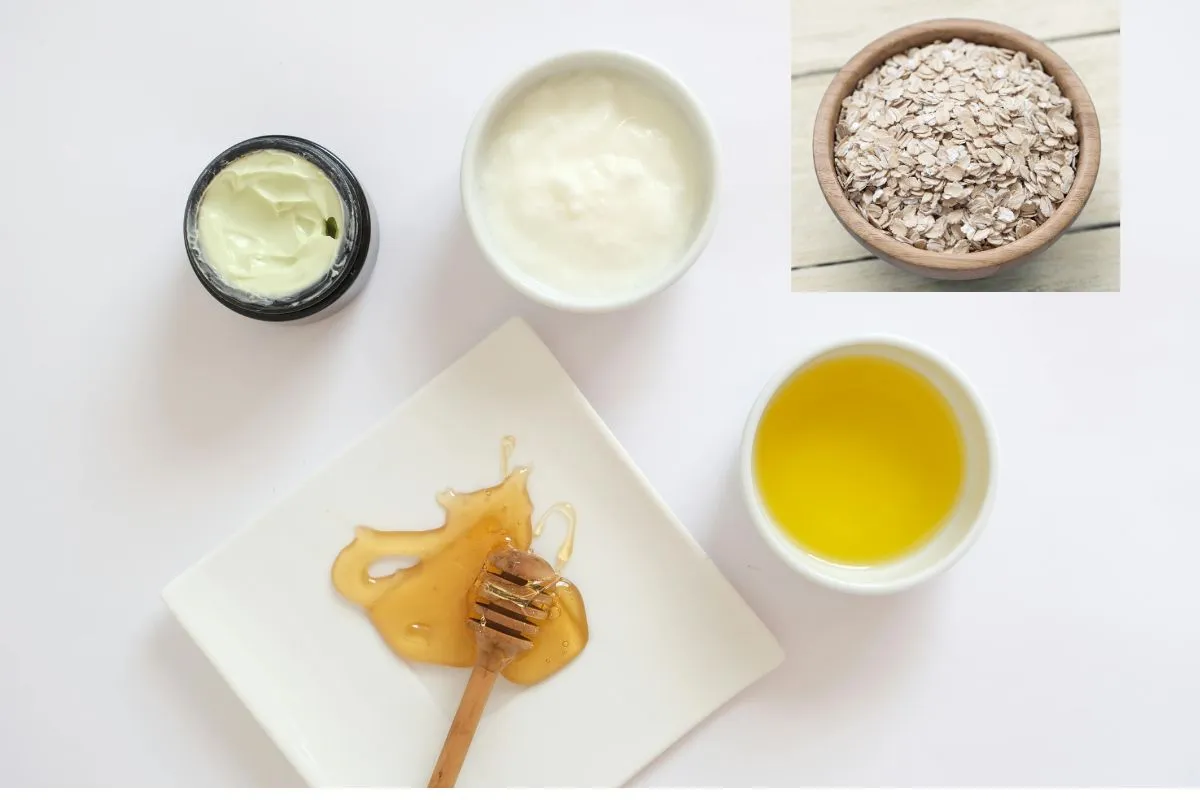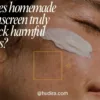No products in the cart.

Your skin deserves a treatment that’s both luxurious and effective. Enter the oatmeal face mask, a simple blend of nature’s finest oats and nourishing ingredients that can visibly brighten, calm, and restore your skin barrier. At Hudira, we believe in combining trusted botanical science with mindful skincare rituals and this guide will take you through every step of how to use, make, and benefit from the oatmeal face mask, so you can glow from within.
But before you dive in, imagine uncovering a little-known tweak that transforms a humble oatmeal mask recipe into a skin-rescuing ritual… one that addresses dullness, irritation and uneven tone in one go. Stay with me because by the end you’ll know how to craft a potent oatmeal and honey mask variant and why it works better than basic DIYs.
Why the Oatmeal Face Mask Works Wonders
When you apply an oatmeal face mask, you’re not just smearing ground breakfast cereal on your skin, you’re tapping into powerful skin-repair and barrier-boosting science.
The power of oatmeal (and colloidal oats)
Research shows that colloidal oats (finely ground oats whose bioactive compounds are extracted) deliver anti-inflammatory, antioxidant and barrier-reinforcing benefits.
- They support the skin’s barrier by boosting lipid, tight-junction and epidermal differentiation gene expression.
- They reduce inflammatory cytokines and oxidative stress — key for irritated or sensitive skin.
- They moisturize by virtue of beta-glucans and starches in oats that attract and hold water.
So when you use an oatmeal mask (or especially an oatmeal and honey mask), you’re giving your skin more than just exfoliation you’re giving it a nourishing treatment.
Why a Mask vs. Just an Oatmeal Scrub
A dedicated oatmeal face mask allows your skin to soak up the benefits in one place rather than being quickly rinsed off, as with a scrub. The occlusive nature of the paste means the oats’ goodness stays in contact longer, giving time for those barrier-repair compounds to deeply penetrate and nourish the skin. Plus, when you combine it with synergistic ingredients (like honey), you get multi-benefit formulas, not just exfoliation, but soothing and glow.
Unlike scrubs that primarily remove dead cells through friction, masks work on a deeper level to hydrate, calm, and repair. The longer exposure time gives your skin a chance to absorb beta-glucans and avenanthramides key components in oats that help reduce redness, itching, and dryness. This makes the oatmeal face mask suitable even for sensitive or reactive skin that can’t tolerate harsh exfoliation. When used consistently, it helps refine texture and leave a visibly plumper, more radiant complexion.
Supporting Superstar: Honey
When you combine oats with honey to make an oatmeal and honey mask, you’re layering in antimicrobial, humectant, and soothing actions. Honey helps support moisture retention and gives that luminous “post-mask glow” that many seek. It also works as a natural preservative and stabilizer, helping your mask stay fresh longer.
Beyond hydration, honey is rich in enzymes and antioxidants that aid in gentle exfoliation and protect against environmental stress. Its natural antibacterial properties help keep breakouts at bay, while its silky texture enhances the mask’s spreadability and comfort. Together, oatmeal and honey form a dynamic duo that balances the skin’s microbiome, softens fine lines, and restores that healthy, dewy finish after each use.
Who Should Use an Oatmeal Face Mask? (And Who Should Be Cautious)
Ideal candidates
- Skin feeling dry, dull or irritated.
- Those with sensitivity, redness or compromised barriers—oats are incredibly gentle.
- Anyone seeking glow and calm without harsh acid peels.
- Oily or acne-prone skin too: yes, you can use the oatmeal face mask here (especially variants like oatmeal honey mask) because oats are non-comedogenic and calming.
Use-cases by skin type
| Skin type | Best variant | Why it works |
| Dry / dehydrated | Classic oatmeal mask + hydrating base | Restores barrier & retains moisture |
| Oily / acne-prone | Oatmeal mask with yogurt + honey | Calms inflammation, gentle exfoliation |
| Sensitive / irritated | Simple oatmeal paste with aloe or rose-water | High-tolerance, soothing |
| Dull / uneven tone | Oatmeal and honey mask with multani mitti or licorice | Exfoliate gently + brighten |
Caution / patch-test
- If you have a known oat allergy or severe gluten sensitivity (cross-contamination possible), patch-test first.
Apply a small amount of the prepared oatmeal mask behind your ear or on your inner arm and wait 24 hours. If you experience redness, itching, or swelling, avoid facial application. Some oatmeal batches can carry traces of gluten or irritants, so a quick test ensures your skin’s safety. - Avoid if you have active inflamed acne cysts use soothing treatment first, then oatmeal mask when calm.
When acne is in its most inflamed stage, even gentle friction can worsen irritation or spread bacteria. Allow breakouts to settle before applying the mask, so the oats’ soothing and anti-inflammatory properties can actually help calm residual redness and speed recovery. - Always cleanse thoroughly afterwards to remove residue and avoid clogged pores (especially for oily skin).
Rinse with lukewarm water and use soft circular motions to ensure no oat particles remain in pores or along the hairline. Any leftover residue can mix with natural oils, leading to congestion. Follow with a lightweight, non-comedogenic moisturizer to keep the skin balanced and fresh.
How to Make an Oatmeal Face Mask: DIY Recipes You’ll Love

Here are five foolproof recipes—from simple base to elevated spa-style.
Recipe 1: Classic Oatmeal Mask (sensitive / all skin types)
Ingredients:
- 2 Tbsp finely ground oats (blend until milky when mixed with water)
- 1 Tbsp warm water or rose-water
Directions:
- Mix oats + liquid into a smooth paste
- Apply to cleansed face (avoid eye area)
- Leave for 10-15 minutes
- Rinse with lukewarm water, pat dry, follow with serum/moisturizer
Why it works: Great intro to oatmeal mask benefits, gentle barrier support.
Recipe 2: Oatmeal and Honey Mask (for dryness & glow)
Ingredients:
- 2 Tbsp ground oats
- 1 Tbsp raw honey
- 1 Tbsp yogurt (optional)
Directions: Mix into a paste → apply → leave for 12-15 min → rinse.
Why it’s powerful: Honey adds humectant and antibacterial support; yogurt adds lactic acid for gentle exfoliation. This is your oatmeal honey mask variant.
Recipe 3: Oatmeal Mask with Multani Mitti & Licorice (South-Asia friendly)
Ingredients:
- 2 Tbsp ground oats
- 1 Tbsp multani mitti (Fuller’s Earth)
- 1 Tbsp licorice root powder
- Enough rose-water to form paste
Directions: Same method.
Benefits: Multani mitti absorbs excess oil, licorice brightens, oats soothe.
Recipe 4: Oatmeal Mask for Oily/Acne-Prone Skin
Ingredients:
- 2 Tbsp ground oats
- 1 Tbsp honey
- ½ Tbsp lemon juice (optional, only if skin tolerates)
Directions: Apply for 10 minutes max, then rinse.
Caution: Lemon is acidic – skip if you have sensitive skin.
Goal: Calm inflammation, exfoliate gently, maintain barrier.
Recipe 5: Overnight Oatmeal Honey Mask (luxury edition)
Ingredients:
- 2 Tbsp ground oats
- 1 Tbsp raw honey
- ½ Tbsp argan oil or squalane
- 1 Tbsp aloe-gel
Directions: Mix and apply thin layer at night, leave for 20 minutes or overnight, rinse in morning.
Why use: Deep nourishment + soothing for stressed or sun-exposed skin.
How Often and When to Use Your Oatmeal Face Mask
- For maintenance: 1-2 times per week is ideal.
- For stressed or compromised skin: you may use 2-3 times/week for a short period until recovery.
- Time of day: evening is best—your overnight repair can amplify the benefits.
- Always follow with a good moisturizer to lock in the results.
Tips for Maximizing Benefits of the Oatmeal Face Mask
- Use finely ground oats (blend until the powder makes the water milky) so it spreads smoothly and doesn’t feel gritty.
- Patch test: apply a small amount on the inner forearm for 24 hours if you have very sensitive skin.
- Use lukewarm (not hot) water to rinse—hot water can strip the barrier.
- Always moisturize after mask removal (this locks in the barrier support the oats provided).
- Store dry oats in an airtight container to keep them fresh for DIY.
- Skip harsh active treatments (strong acids, retinoids) on the same day as your oatmeal mask lets the skin rest.
Myth-Busting: What an Oatmeal Mask Doesn’t Do
- It’s not a substitute for sunscreen: even though oats help barrier, you still need SPF.
- It won’t instantly erase deep scars or pigment. It helps in soothing, gentle exfoliation and glow but consistent use is key.
- More is not better: over-applying strong DIY masks (especially with acids/lemon) can irritate the barrier and shut down the benefits of the oatmeal face mask.
Final Thoughts
In a world of complicated routines and expensive treatments, the oatmeal face mask brings you back to elegantly simple, effective skincare. By combining skin-loving oats with intuitive ingredients like honey (hello oatmeal and honey mask!) and local botanicals, you give your complexion the calm-glow it’s been craving. As you commit to this ritual with Hudira’s gentle, mindful ethos, you’ll not only see visible results—you’ll feel the difference in your skin’s texture, tone and resilience.
Ready to glow naturally? Try Hudira’s organic face masks by this weekend—and share your journey with us. Your skin’s best days are ahead.
FAQs
Q. How to make an oat face mask at home?
To make an oat face mask, simply grind 2 Tbsp of plain oats into a fine powder, mix with warm water or a hydrating liquid until you form a paste, apply to clean skin for 10-15 minutes, then rinse off and moisturize. You can upgrade it to an oatmeal and honey mask by adding 1 Tbsp raw honey for extra nourishment.
Q. Is an oatmeal face mask good for oily or acne-prone skin?
Yes—an oatmeal mask can be excellent for oily or acne-prone skin, especially when paired with calming ingredients like honey or yogurt (as an oatmeal honey mask variant). The oatmeal helps soothe inflammation and maintain barrier health, which is key for skin that’s prone to breakout and irritation.
Q. How often should I use an oatmeal mask?
For most skin types, using an oatmeal face mask 1-2 times per week is ideal. If your skin is compromised (irritated, dull, sun-exposed), you may increase to 2-3 times/week for a short period, then scale back as your barrier recovers.
Q. What’s the difference between an oatmeal mask and an oatmeal and honey mask?
A standard oatmeal mask uses ground oats mixed with water or a hydrating base. An oatmeal and honey mask adds raw honey (and optionally yogurt/oil) to introduce additional humectant, antimicrobial and soothing benefits. Both are effective, but the honey-infused version gives deeper nourishment and glow.



Add comment